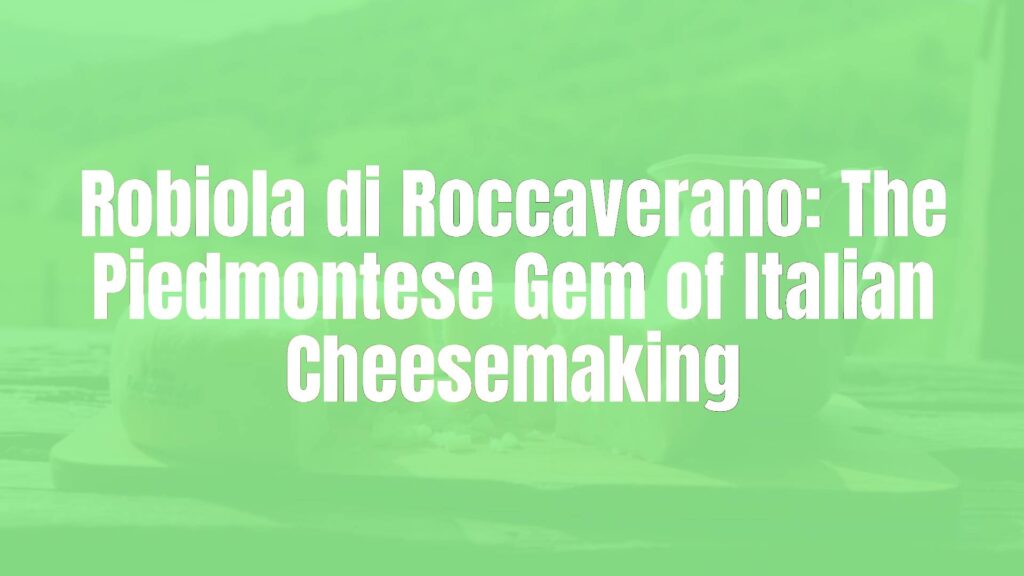Introducing Robiola di Roccaverano
Robiola di Roccaverano stands as one of Italy’s most celebrated soft-ripened cheeses, distinguished by its delicate flavor and artisanal origins in the hills of Piedmont. Hailing specifically from the small town of Roccaverano in the province of Asti, this cheese is cherished both locally and internationally for its creamy texture and subtle tang.
What Sets Robiola di Roccaverano Apart?
The uniqueness of Robiola di Roccaverano lies in its traditional blend of raw goat’s milk, occasionally mixed with cow’s and sheep’s milk. The PDO version (Protected Designation of Origin) mandates the use of at least 50% goat’s milk, preserving authenticity and bolstering local farming practices. Robiola is typically formed into small, cylindrical shapes and exhibits a thin, edible rind with an ivory interior that remains lusciously smooth and spreadable.
Historical Roots and Cultural Importance
The legacy of Robiola di Roccaverano can be traced back centuries, with documented references dating as far as the 15th century. Its enduring presence is deeply woven into the culinary fabric of the Langhe and Monferrato regions, serving as a symbol of rural heritage and the resourceful spirit of Piedmontese shepherds. Annual festivals and markets celebrate Robiola, further highlighting its regional pride and significance.
Production Insights
Maintaining its time-honored methods, Robiola di Roccaverano is made using unpasteurized milk, with minimal intervention to preserve the character of the milk and local microflora. After gentle coagulation with natural ferments and animal rennet, the curds are ladled by hand, resulting in a soft, creamy cheese that develops a thin, barely perceptible rind during a short aging process — generally from a few days to about 10 days, depending on preferences for freshness or a more pronounced flavor.
Culinary Usage and Enjoyment
This cheese’s versatility makes it beloved in both simple and refined settings. Traditionally, Robiola di Roccaverano is savored on its own, accompanied by rustic country bread or grissini. Its mild, citrusy notes and tangy finish pair perfectly with honey, jams, and local hazelnuts. In Piedmont, it is not uncommon to see Robiola gracing antipasti platters or adding richness to savory tarts and risottos.
Classic Pairings and Serving Suggestions
Robiola di Roccaverano pairs harmoniously with regional wines such as Dolcetto d’Asti, Barbera, or a crisp Arneis, each complementing its creamy texture and bright acidity. To fully appreciate its character, serve at room temperature, allowing the cheese’s subtle aroma and flavor profile to unfold. For a traditional touch, place the cheese atop warm toasted bread and drizzle with acacia honey.
Variations and Regional Nuances
While the PDO version follows strict guidelines, non-PDO robiolas in Piedmont may feature varying proportions of cow, goat, and sheep milk, resulting in slightly different textures and taste nuances. Some producers even extend the aging period to create a firmer cheese with a more intense, earthy profile—a delightful contrast to the supremely fresh style favored by purists.
A Piedmontese Treasure
Robiola di Roccaverano stands as a testament to the culinary artistry and pastoral traditions of northwestern Italy. Its delicate flavor, eye-catching simplicity, and deep cultural ties make it a must-try for cheese lovers seeking an authentic taste of Piedmont.

